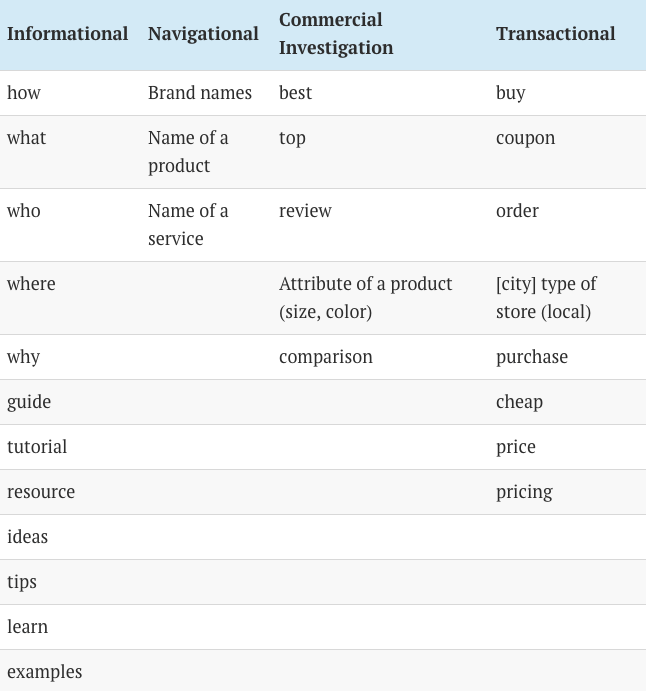Searcher Intent: The Overlooked ‘Ranking Factor’ You Should Be Optimizing For
What is search intent?
Why search intent matters
The four types of search intent
Informational
Navigational
Transactional
Commercial investigation
How to infer search intent ATTACH
Search intent is often obvious from the wording of the query itself.

The answer lies in the SERPs
How to optimize for search intent (3 steps)
Search intent should dictate the type of content you create. The four search intent groups are way too broad to be actionable.
Step 1. Check ‘SERP reliability’
Little or no fluctuation in rankings over time
Fluctuation of some pages but not others
Lots of fluctuation in rankings
This indicates one of two things:
- Search intent is constantly changing.
- Google is struggling to understand the true intent behind the search.
Step 2. Make sure your content aligns with the “3 C’s of search intent”
Step 3. Take cues from the search results and top-ranking pages
1) Look at the “People also ask” box in the SERPs
2. Run a content gap analysis at the page-level
3. Visit the top-ranking pages
Case study #1: +677% more traffic by optimizing for search intent ATTACH
before

after

Just give people what they want.
Case study #2: +3,100% more traffic by optimizing for search intent
Basically, searchers didn’t want to see a study; they wanted an actionable guide.
So that’s what we created.
Final thoughts
Search intent is perhaps the most important “ranking factor” in 2019.